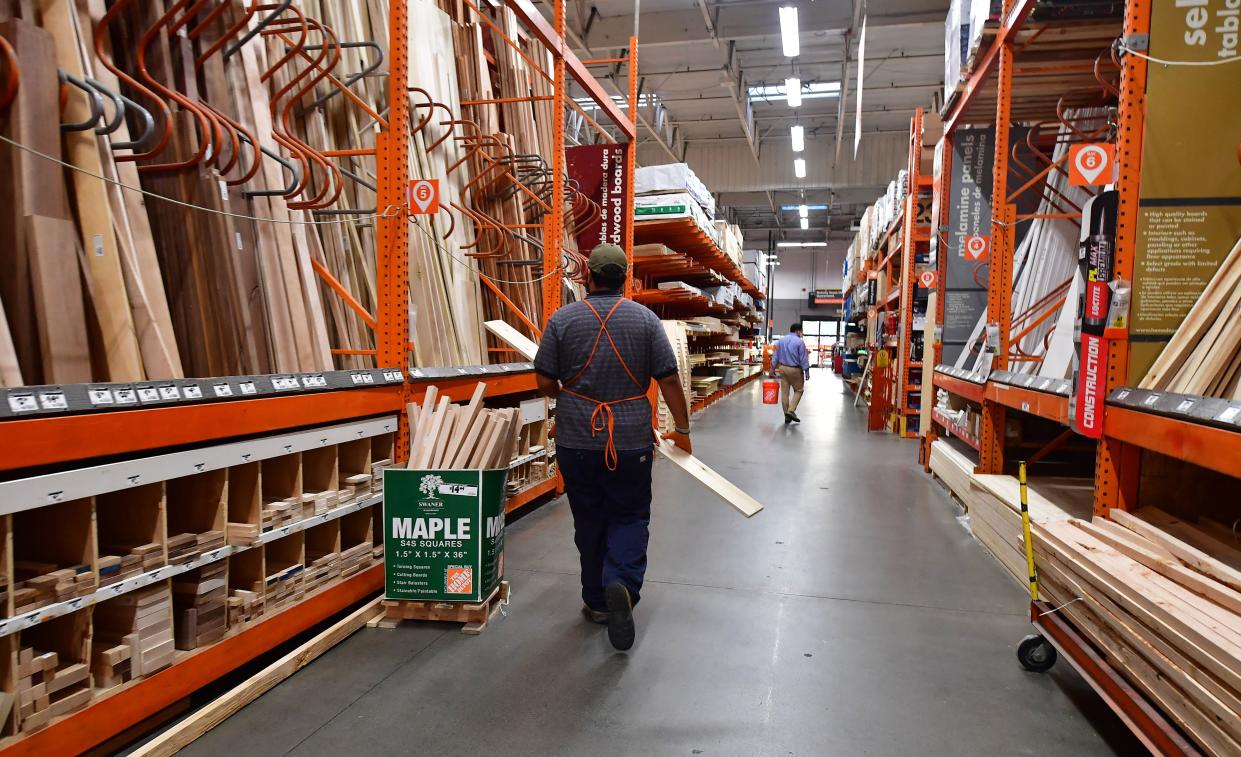Housing slowdown isn't hurting Home Depot and Lowe's — will it last?
The headwinds that are slowing down the U.S. housing market are working in favor for home improvement retailers like Home Depot (HD) and Lowe’s (LOW), but it's unclear how long that momentum may last.
Atlanta-based Home Depot posted a better-than-expected quarter amid rising interest rates and economic uncertainty. Same-store sales in the U.S. increased 4.5% year-over-year for the quarter. Similarly, North Carolina-based Lowe's reported higher sales and raised its full-year earnings guidance, another sign that consumers are spending on remodeling.
Executives at both expressed a bullish tone for their outlook next year amid weakened home sales, housing prices, and construction as mortgage rates now top 7%.
“We're seeing another just interesting dynamic where with mortgage rates increasing, our customer is becoming more and more likely to stay in place and begin a project," Home Depot CFO Richard McPhail said on the company's earnings call. "So improved in place.”
Nationally, sales of previously owned U.S. homes fell for the ninth consecutive month in October, the National Association of Realtors said Friday, as rapidly climbing mortgage rates deter many would-be buyers. Rates are more than double than at the start of the year.
The sharp drop in demand has discouraged sellers.

For instance, the number of homes for sale at the end of October was 1.22 million, down 0.8% from both September and a year ago. New listings are down from a year ago, indicating that sellers are reluctant to list their homes.
At the same time, while price growth has cooled markedly, prices still remain high. Nationally, home prices increased year-over-year by 11.4%, according to Corelogic data.
That's provided homeowners with a cushy nest egg. Homeowners are sitting on an estimated $20 trillion worth of home equity that they can tap for home improvements.
Data from the Federal Reserve shows that balances of home equity lines of credit (HELOC) increased by $3 billion, the second consecutive quarterly increase following years of declining balances.
“This unique combination of factors is causing homeowners to trade up in place, preferring to invest in repairs and renovations to make their current homes meet their families evolving needs rather than buying a new home,” Marvin Ellison, Lowe's chairman, CEO, and president, said on the company's earnings call.
However, some Wall Street analysts and other industry watchers argue that the home improvement business could feel the impact of the slowdown in the housing market.
“Any potential decrease in home prices could hinder consumer’s perceived return on investment in their homes following several years of record spend[ing] in the category, according to Raymond James analyst Bobby Griffin, in a note after Home Depot’s earnings.

Housing woes continues to raise concerns about the demand for remodeling, especially improvements that occur shortly before and after home sales. Sellers often spend on repairs and updates to entice buyers, while new homeowners spend on projects to make their houses their own.
According to the Remodeling Futures Program at the Joint Center for Housing Studies of Harvard University, annual gains in improvement and maintenance expenditures to owner-occupied homes are expected to decline sharply by the middle of next year.
“Housing and remodeling markets are undoubtedly slowing from the exceptionally high and unsustainable growth rates that followed in the wake of the pandemic-induced recession,” said Carlos Martín, project director of the remodeling futures program at the Center. “Spending for home improvements will continue to face headwinds from declining home sales, rising interest rates, and the increasing costs of contractor labor and building materials.”
Dani Romero is a reporter for Yahoo Finance. Follow her on Twitter @daniromerotv
Read the latest financial and business news from Yahoo Finance
Download the Yahoo Finance app for Apple or Android
Follow Yahoo Finance on Twitter, Facebook, Instagram, Flipboard, LinkedIn, and YouTube
